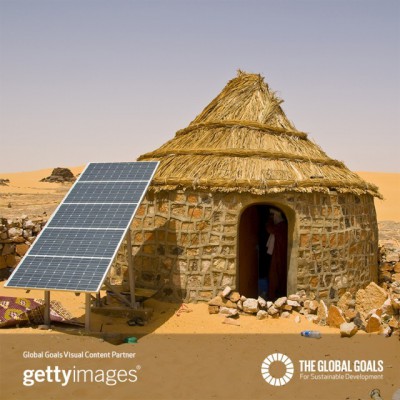
If you are reading this article on a computer or your phone, you are benefiting from having access to energy, which is required to power your device. If you are living in the United States, you also most likely have access to an affordable and reliable source of energy. Your ability to access and use energy is likely much different from the ability of others around the world. One thing you do share in common with every other person on the planet is how we choose to produce and use energy impacts the entire planet. How will we work together to ensure energy equality, where everyone has access to the energy they need to live, work, grow food and do other things that are essential to their wellbeing, while at the same time ensuring the way we produce and use energy doesn’t harm our planet? These are the questions world leaders are trying to solve, and young people have an important role to play in coming up with the answers.
Leaders from 193 countries have agreed to ensure access to affordable, reliable, sustainable and modern energy for all people by the year 2030, which is Goal 7 of the United Nations (UN) Sustainable Development Goals. The Sustainable Development Goals are 17 interconnected goals that seek to transform our world by ending all forms of poverty, eliminating inequalities and improving the state of the world’s natural and human-made environments through sustained international cooperation and efforts over the next 15 years.
By learning about, taking action and teaching others about the need for affordable and clean energy around the world, young people can play a valuable leadership role in helping to accomplish Goal 7, as well as the other Sustainable Development Goals. Here are five important facts, and some educational resources, related to Goal 7 of the Sustainable Development Goals that can help youth learn and engage as global citizens.
According to the UN:
One in five people lack access to modern electricity. Lacking access to electricity has a major effect on people’s lives. According the UN, “Electricity enables children to study after dark. It enables water to be pumped for crops, and foods and medicines to be refrigerated. Modern fuels for cooking and heating relieve women from the time-consuming drudgery and danger of traveling long distances to gather wood.” Development over the past two decades has had a significant impact on increasing global energy access, but some parts of the world still lag behind, such as sub-Saharan Africa and South Asia.
*Three billion people rely on wood, coal, charcoal or animal waste for cooking and heating. *Using these types of fuels for cooking and heating increases indoor air pollution, which is responsible for killing about four million people each year, according to “Sustainable Energy for All: Achieving Universal Energy Access.”
Energy is the dominant contributor to climate change, accounting for around 60 percent of total global greenhouse emissions. The effects of human-related greenhouse gas emissions are shared by all around the globe, although the severity of impacts is disproportionate and the sources of emissions are not equal. “America produces 25 percent of the world’s carbon dioxide through fossil fuel emission with only 4 percent of the world’s population,” according to Global Goals.
Reducing the carbon intensity of energy is a key objective in long-term climate goals. Developing and making available sources of low-carbon and renewable energies to more people will help reduce carbon emissions and their harmful effect on the planet, while providing energy to more people around the world.
Women, who are the primary users and managers of energy in many households globally, are more likely to conserve energy than men. According to “Sustainable Energy for All: The Gender Dimensions” by the UN Industrial Development Organization and UN Women, women in some areas use 22 percent less energy than men, and are “more receptive than men to energy conservation efforts and are more willing to change their everyday behavior to save energy.”















Leave a Reply